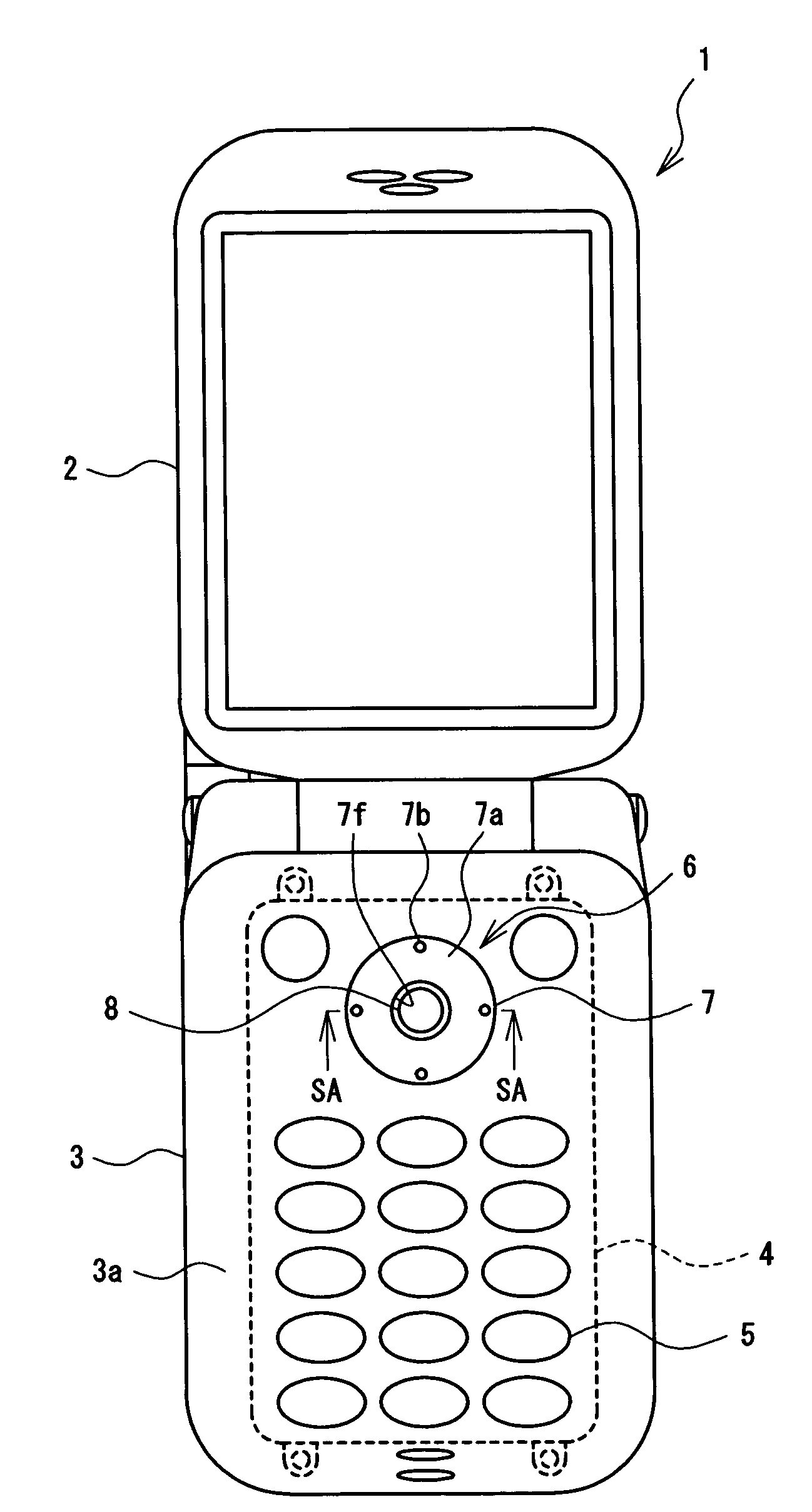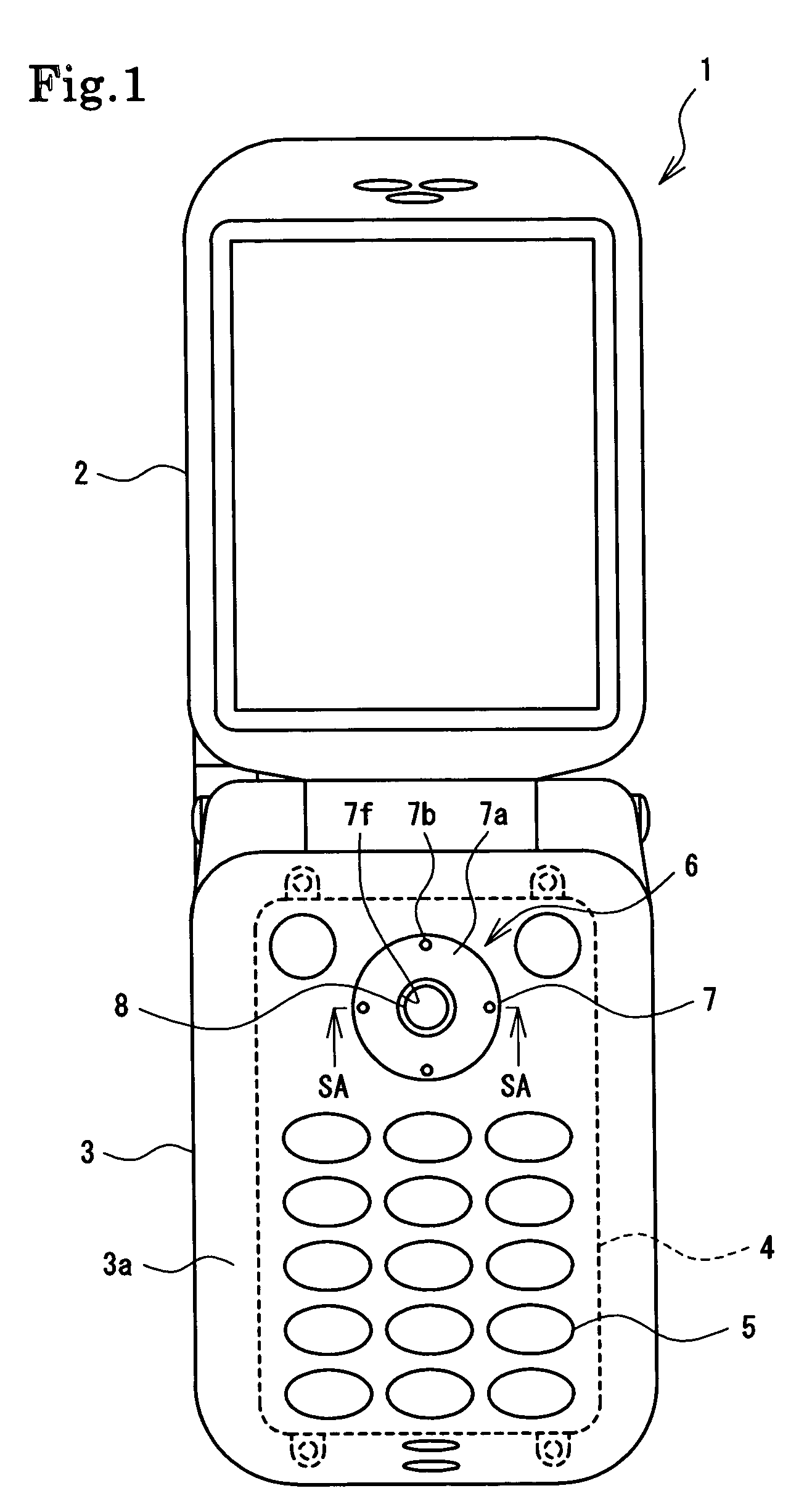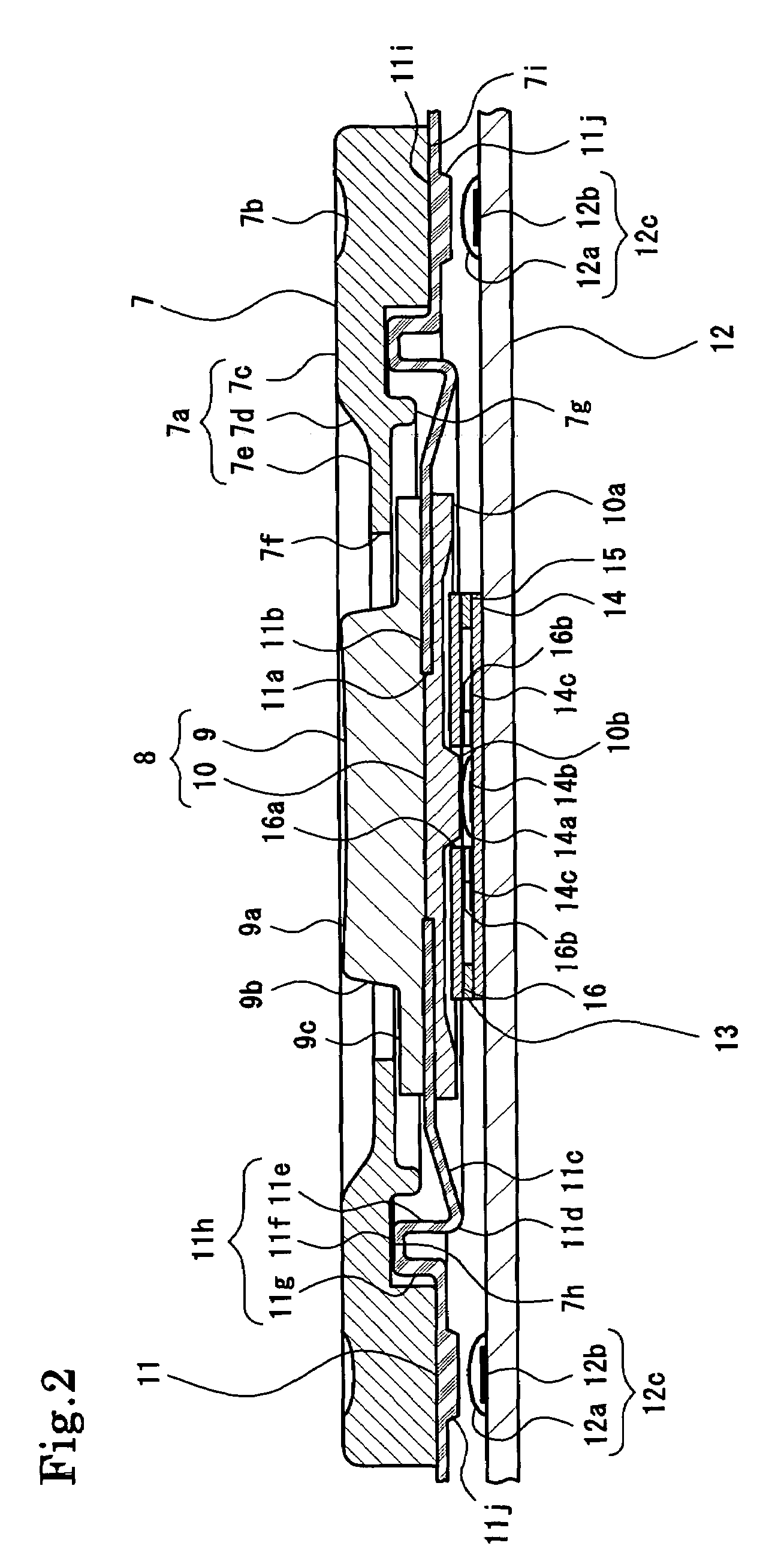[0008]In the present invention, there is provided a key top having an upper portion protruding from an insertion hole extending through an exterior member and a lower portion having a pushing member protruding downwardly therefrom and capable of sliding in the direction of the hole inner surface of the insertion hole. In addition, there are provided a plurality of contact input portions adapted to effect input upon receiving pressure from the pushing member when the key top is caused to slide. Thus, instead of the input operation for the conventional multi-directional input keys involving deep pushing-in with force, an input operation is performed in which input can be effected through individual contact input portions by sliding the key top, which requires no great force. If conducted repeatedly, this input operation involves very little fatigue on the part of the operator. Further, it helps to achieve an improvement in terms of
operability. Further, since the input operation is performed through the key-top sliding, which requires no great force, this multi-directional input key is suitable for the multi-directional input key of an electric apparatus of which space saving is much required as in the case of a portable information terminal apparatus etc. Further, the present invention adopts an input operation involving no pushing-in, so that when applied to the multi-directional input key of a portable information terminal apparatus, on which input operation is often performed with one hand, the present invention makes it possible to perform the input operation in a stable manner.
[0011]The key top makes input sliding from its initial position toward the hole inner surface of the insertion hole and return sliding back to the initial position. As a means for supporting the key top so as to allow the input sliding and return sliding, there is further provided, in accordance with the present invention, a key sheet formed of a rubber-like resilient material and adapted to support the key top so as to allow it to slide from the initial position in the direction of the hole inner surface of the insertion hole and in the return direction toward the initial position. Then, this key sheet is firmly attached to the key top and the exterior member. Thus, by utilizing the resiliency of the key sheet, it is possible to reliably effect both input sliding and return sliding of the key top. Further, any dust,
dirt or water is prevented from entering through the gap between the key top and the exterior member by means of the key sheet firmly attached to the key top and the exterior member.
[0012]As a specific example of the manner of firm attachment of the key sheet to the key top, the present invention adopts a construction in which the key top is composed of upper and lower key top portions, between which the key sheet is sandwiched for firm attachment. In this construction, in which the key sheet is secured between the upper and lower key top portions, it is possible to attach the two members firmly to each other so that no detachment may occur even if sliding is repeatedly performed. Further, this helps to achieve a further improvement in terms of sealing property.
[0013]The key sheet slidably supporting the key top may include an inclined portion spreading out from the portion firmly attached to the key top, and an arch-shaped curved portion formed by upwardly bending the inclined portion starting with its lower end portion, in which the wall thickness of an erect wall portion in the outer periphery of the curved portion is larger than the wall thickness of an erect wall portion on the inner periphery thereof and that of the inclined portion. In this construction, when the key top is caused to slide, the portion connecting the thin-walled inner
peripheral erect wall portion and the inclined portion on the sliding-direction side (the lower end portion of the inclined portion) is rotated using the thick-walled outer
peripheral erect wall portion in the curved portion as a fulcrum so as to bring that portion under the thick-walled erect wall portion, thus effecting orderly elastic deformation. Thus, at the time of sliding, the key sheet, which undergoes elastic deformation, constitutes no obstacle. Further, when the key top makes return sliding, the thick-walled outer
peripheral erect wall portion exerts an elastic urging force for returning on both the sliding-direction side and the side opposite thereto, whereby it is possible to restore the key top reliably to the initial position.
[0015]Further, in the present invention, there is further provided a central contact portion below the pushing member of the key top at its initial position, whereby it is possible to extend a range of operational choices to cope with a further increase in the number of functions of the electric apparatus equipped with this slide-type multi-directional input key. In this case, it is desirable that when the key top is at a slide position, the bottom surface of the pushing member be situated above the central contact portion so that the pushing member can effect input through both the contact input portions and the central contact portion, thereby further extending the range of operational choices. Note that in this specification, the term “slide position” means any position to which the key top is caused to slide from an initial position, i.e., a position where no operation is performed on the key top. It may be a position where the key top has completely stopped sliding or a halfway position in the course of sliding.
[0016]Furthermore, in the slide-type multi-directional input key of the present invention, it is also possible to further provide a conventional-type (pushing-in type) input key, thereby further extending the range of operational choices. In this case, as the exterior member having a key top insertion hole extending therethrough, there is provided a ring-shaped outer-ring key top allowing multi-directional input. On the other hand, the exterior member may also be formed by a structure member, such as a casing or bracket, of the electronic apparatus equipped with the slide-type multi-directional input key of the present invention. That is, in this specification, the term “exterior member” means a member having an insertion hole through which the upper portion of the key top (upper key top portion) is passed for the protrusion.
 Login to View More
Login to View More  Login to View More
Login to View More 


